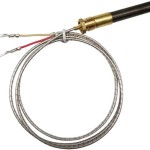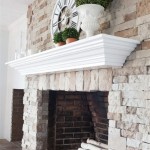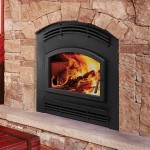Glass Fireplace Inserts: Gas-Fueled Efficiency and Aesthetics
The integration of glass fireplace inserts, particularly those utilizing gas as a fuel source, has significantly reshaped the landscape of home heating and interior design. These inserts represent a modern evolution of the traditional wood-burning fireplace, offering enhanced efficiency, ease of use, and a safer, cleaner alternative. Understanding the functionalities, benefits, and considerations associated with gas glass fireplace inserts is crucial for homeowners contemplating this upgrade.
A glass fireplace insert, in essence, is a sealed unit designed to be installed within an existing fireplace opening. Unlike open-hearth fireplaces, these inserts feature a glass front that encloses the fire, drastically reducing heat loss up the chimney and improving overall heating efficiency. Gas-fueled versions utilize natural gas or propane, providing a consistent and controllable flame. The glass front serves a dual purpose: containing the fire for safety and providing a clear view of the flames, contributing to the aesthetic appeal of the fireplace.
These inserts operate by drawing air from the room or directly from the outside, combusting the gas fuel, and releasing heat through the glass front and, in some models, through convection vents. The sealed nature of the unit prevents drafts and eliminates the need for constant tending, a common requirement with traditional wood-burning fireplaces. Furthermore, gas inserts produce significantly fewer emissions compared to burning wood, making them a more environmentally conscious choice.
Key Point 1: Enhanced Heating Efficiency and Cost Savings
The primary advantage of a gas glass fireplace insert lies in its superior heating efficiency. Traditional open fireplaces are notoriously inefficient, with a significant amount of heat escaping up the chimney. Studies indicate that open fireplaces can lose up to 90% of the heat generated, essentially warming the outdoors rather than the room. Gas inserts, on the other hand, are designed to retain and radiate heat, resulting in efficiency ratings often exceeding 70% and reaching as high as 80-90% in some models.
This increased efficiency translates directly into cost savings on heating bills. By effectively heating a specific area of the home, a gas insert can reduce the reliance on central heating systems, particularly during milder weather. The precise control offered by gas inserts allows homeowners to adjust the flame height and heat output to suit their needs, optimizing energy consumption and minimizing waste. The use of a sealed combustion system further contributes to efficiency by preventing drafts and drawing air from outside the home, reducing the strain on the existing HVAC system.
Furthermore, the long-term cost savings associated with gas inserts extend beyond reduced energy bills. Unlike wood-burning fireplaces, gas inserts eliminate the need for purchasing, storing, and handling firewood. This eliminates the cost of firewood acquisition, as well as the labor involved in splitting, stacking, and transporting it. Additionally, the reduced maintenance requirements of gas inserts, compared to wood-burning fireplaces, contribute to long-term cost savings. The elimination of ash removal and chimney sweeping, common tasks associated with wood-burning fireplaces, further reduces overall expenses.
The efficiency ratings of gas fireplace inserts are often expressed as Annual Fuel Utilization Efficiency (AFUE). A higher AFUE rating indicates a more efficient unit, meaning that it converts a larger percentage of the fuel consumed into usable heat. Homeowners should carefully consider the AFUE rating when selecting a gas insert to ensure optimal heating performance and cost savings. It's also important to factor in the cost of gas versus other heating fuels in your region to accurately estimate potential savings.
Key Point 2: Safety and Environmental Considerations
Gas glass fireplace inserts offer significant improvements in safety compared to traditional open fireplaces. The sealed combustion system prevents sparks and embers from escaping into the room, reducing the risk of fires. The glass front acts as a barrier, preventing accidental contact with the flames and protecting children and pets from potential burns. Many models also incorporate safety features such as automatic shut-off valves that activate in the event of gas leaks or malfunctions.
The elimination of wood-burning also addresses concerns related to indoor air quality. Burning wood releases particulate matter, smoke, and other pollutants into the air, which can exacerbate respiratory problems and contribute to health issues. Gas inserts, particularly those certified by organizations like the Environmental Protection Agency (EPA), produce significantly fewer emissions, resulting in cleaner indoor air. Vent-free models, while offering greater installation flexibility, require careful consideration due to their potential impact on indoor air quality and should be used with caution and in accordance with manufacturer guidelines.
From an environmental perspective, gas inserts are a more sustainable option compared to wood-burning fireplaces. The combustion of natural gas or propane produces fewer greenhouse gas emissions than burning wood. While both fuels contribute to carbon dioxide emissions, natural gas and propane are generally considered cleaner-burning fuels than wood. Furthermore, the use of gas inserts reduces the demand for firewood, which can contribute to deforestation and habitat loss in some areas. Sourcing firewood sustainably is crucial, but gas offers a readily available and often less environmentally impactful alternative.
Proper installation and maintenance are crucial for ensuring the safety and environmental performance of gas inserts. Installation should be performed by a qualified technician who is certified to work with gas appliances. Regular inspections and maintenance, including cleaning the burner and venting system, are essential for preventing malfunctions and ensuring optimal combustion. Carbon monoxide detectors should be installed and maintained in the home to provide an early warning in the event of a gas leak or incomplete combustion.
Key Point 3: Aesthetic Versatility and Design Options
Beyond their functional benefits, gas glass fireplace inserts offer a wide range of aesthetic options to complement various interior design styles. The glass front provides a clear and unobstructed view of the flames, creating a focal point in the room. Manufacturers offer a variety of glass types, including clear, tinted, and reflective options, allowing homeowners to customize the appearance of the fire. The addition of decorative logs, stones, or glass media further enhances the visual appeal and creates a realistic or contemporary look.
The design versatility of gas inserts extends to the style of the surround and framing. Inserts can be installed with a variety of mantels, hearths, and surrounds, ranging from traditional wood designs to modern metal or stone finishes. This allows homeowners to seamlessly integrate the insert into their existing décor or create a completely new look. The compact size of many gas inserts makes them suitable for installation in smaller spaces, providing a heating and aesthetic solution for apartments, condos, and other dwellings with limited fireplace openings.
Furthermore, technological advancements have led to the development of realistic flame patterns and ember beds in gas inserts. Modern units often feature variable flame height controls, allowing homeowners to adjust the intensity and appearance of the fire to suit their mood and preferences. Some models even incorporate remote controls, enabling users to operate the fireplace from the comfort of their couch. The integration of smart home technology allows for even greater control and convenience, with features such as programmable timers and temperature sensors.
The ease of use and minimal maintenance requirements of gas inserts make them an attractive option for homeowners seeking a hassle-free fireplace experience. Unlike wood-burning fireplaces, gas inserts require no manual ignition, refueling, or ash removal. The simple flip of a switch or the press of a button is all that is needed to ignite the fire and enjoy the warmth and ambiance. This convenience makes gas inserts a popular choice for busy individuals and families who want to enjoy the benefits of a fireplace without the added work and responsibility.
In conclusion, gas glass fireplace inserts represent a significant advancement in home heating technology and design. Their superior efficiency, safety features, environmental benefits, and aesthetic versatility make them a compelling alternative to traditional wood-burning fireplaces. By carefully considering the factors outlined above, homeowners can make an informed decision about whether a gas insert is the right choice for their needs and preferences.

Chaska 34 Gas Fireplace Insert Kozy Heat

Gdig3n Napoleon Fireplaces Oakville 3 Glass Gas Fireplace Insert Big George S Home Appliance Mart

Fireplace Inserts Nw Natural Appliance Center

Top Direct Vent Gas Inserts In D C

Glass Fireplace Doors

Kozy Heat Chaska 34 Gas Fireplace Insert Mazzeo S Stoves Fireplaces

Venezia Fireplace Insert With Panoramic Glass Gas By Italkero

Duluth Forge Vent Free Stainless Outdoor Gas Fireplace Insert With Crystal Fire Glass Media 24 000 Btu 170094 The Home Depot

Benefits Of Glass Doors Fireplace Door Sets Burlington Wi

Chaska 29 Gas Fireplace Insert Fireplaces
Related Posts








